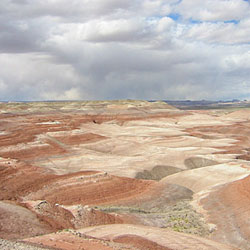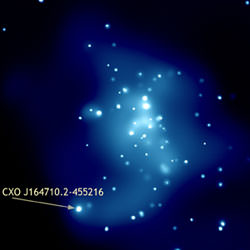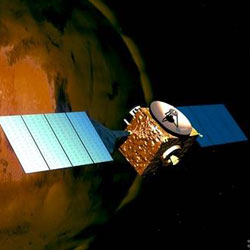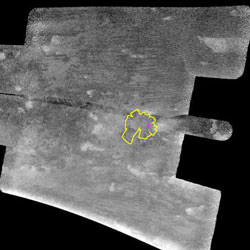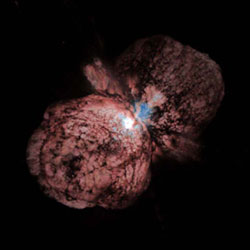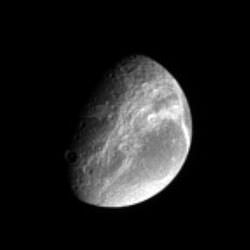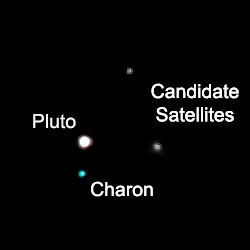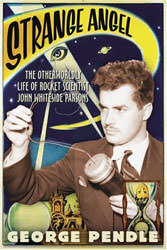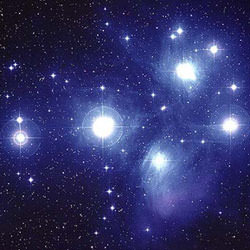
The Pleiades. Image credit: David Malin
Monday, October 31 – Happy Halloween! Tonight’s astronomical adventure will be about exploring an ancient and well renowned star cluster associated with this holiday that we’ve kept track of all week — the Pleiades! Easily found from a modestly dark site with the unaided eye, the Pleiades can be spotted well above the north-eastern horizon within a couple of hours of nightfall. To average skies, many of the 7 bright components will resolve easily without the use of optical aid, but to telescopes and binoculars? The M45 is stunning…
First let’s explore a bit of history. The recognition of the Pleiades dates back to antiquity and it’s known by many names in many cultures. The Greeks and Romans referred to them as the “Starry Seven”, the “Net of Stars”, “The Seven Virgins”, “The Daughters of Pleione” and even “The Children of Atlas”. The Egytians referred to them as “The Stars of Athyr”, the Germans as “Siebengestiren” (the Seven Stars), the Russians as “Baba” after Baba Yaga, the witch who flew through the skies on her fiery broom. The Japanese call them “Suburu”, Norsemen saw them as packs of dogs and the Tonganese as “Matarii” (the Little Eyes). American Indians viewed the Pleiades as seven maidens placed high upon a tower to protect them from the claws of giant bears, and even Tolkien immortalized the stargroup in the “Hobbit” as “Remmirath”. The Pleiades have even been mentioned in the Bible! So, you see, no matter where we look in our “starry” history, this cluster of seven bright stars has been part of it.
But let’s have some Halloween fun!
The date of the Pleiades culmination (its highest point in the sky) has been celebrated through its rich history by being marked with various festivals and ancient rites — but there is one particular rite that really fits this occasion! What could be more spooky on this date than to imagination a bunch of Druids celebrating the Pleiades midnight “high” with Black Sabbath? This night of “unholy revelry” is still observed in the modern world as “All Hallow’s Eve” or more commonly as “Halloween”. Although the actual date of the Pleiades midnight culmination is now on November 21 instead of October 31, why break with tradition? Thanks to its nebulous regions the M45 looks wonderfully like a “ghost” haunting the starry skies.
Treat yourself and your loved ones to the “scariest” object in the night. Binoculars give an incredible view of the entire region, revealing far more stars than are visible with the naked eye. Small telescopes at lowest power will enjoy the M45’s rich, icy-blue stars and fog-like nebulae. Larger telescopes and higher power reveal many pairs of double stars buried within its silver folds. No matter what you chose, the Pleiades definitely rocks!
Tuesday, November 1 – On this day in 1977, Charles Kowa made a wild discovery – Charon. This represented the first of a multitude of tiny, icy bodies that lay in the outer reach of our solar system.
While we have your icy body outside on the night of New Moon and “All Souls Day”, let’s try looking for one – asteroid Psyche – the personification of the soul.
While Psyche will not be easy, if you’ve found the Pleiades you are not far. Located around 2 degrees southwest of Zeta Taurii, you’ll find this tiny asteroid moving slowly past star 115 to the south. Don’t let her steal you away….
Wednesday, November 2 – Today celebrates the birth of an astronomy legend – Harlow Shapely. Born in 1885, the American-born Shapley paved the way in determining distances to stars, clusters, and the center of our Milky Way galaxy. Among his many achievements, Shapely was also the Harvard College Observatory director for many years. Today in 1917 also represents the night first light was seen through the Mt. Wilson 100″ telescope.
Although we don’t have that much aperture to study with tonight, we can still get a very satisfactory look at M15 through any size binoculars or telescopes. You can find it easily just about two fingerwidths northwest of red Epsilon Pegasi (Enif). Shining brightly at magnitude 6.4, low power users will find it a delightfully tight ball of stars, but scope users will find it quite unique. As resolution begins, sharp-eyed observers will note the presence of a presence of planetary nebula – Pease 1. This famous X-ray source you have just seen with your eyes may have supernovae remnants buried deep inside…
Thursday, November 3 – On this day in 1955, one of the few documented case of a person being hit by a meteorite occurred. What are the odds on that? Better than average tonight…
1957 the Russian Space Program launched its first “live” astronaut into space – Laika. Carried on board Sputnik 2, our canine hero was the first living creature to reach orbit. The quickly developed Sputnik 2 was designed with sensors to transmit ambient pressure, breathing patterns and heartbeat of its passenger along with a television camera monitor. The craft also monitored ultraviolet and x-ray radiation as well to further study the impact of space flight upon human occupants. Unfortunately, the technology of the time offered no way to return Laika to Earth, so she perished in space. On April 14, 1958, Laika and Sputnik 2 returned to Earth in a fiery re-entry ending after 2,570 orbits.
Laika may be gone, but the cosmos let her a glowing “bone” in space. Tonight turn your telescopes just a breath above Phi Perseii to view planetary nebula – M76. It may be hell in the heavens, because its central star is one of the hottest known. We’ll be back to “dig up” more on this one later.
Friday, November 4 – This morning will be the peak of the Southern Taurid meteor shower. Already making headlines around the world for producing fireballs, the Taurids will be best visible in the early morning hours as soon as the Moon is far west.. The radiant for this shower is, of course, the constellation of Taurus and red giant Aldeberan, but did you know the Taurids are divided into two streams?
It is surmised that the original parent comet shattered as it passed our Sun around 20,000 to 30,000 years ago. The larger “chunk” continued orbiting and is known as periodic comet Encke. The remaining debris field turned into smaller asteroids, meteors and larger fragments that often pass through our atmosphere creating astounding “fireballs” known as bolides. Although the fall rate for this particular shower is rather low at 7 per hour, these slow traveling meteors (27km or 17 miles per second) are usually very bright and appear to almost “trundle” across the sky. With the chances high all week of seeing a bolide, this makes a bit of quiet contemplation under the stars a “frighteningly” good time.
Saturday, November 5 – What dark and creepy night would be complete without the sad tale of Andromeda and Perseus? Tonight let’s have a look at Beta Perseii – the most famous of all eclipsing variable stars. Now, identify Algol and we’ll learn about the “Demon Star”.
Ancient history has given this star many names. Associated with the mythological figure, Perseus, Beta was considered to be the head of Medusa the Gorgon, and was known to the Hebrews as Rosh ha Satan or “Satan’s Head”. 17th century maps labeled Beta as Caput Larvae, or the “Spectre’s Head”, but it is from the Arabic culture that the star was formally named. They knew it as Al Ra’s al Ghul, or the “Demon’s Head”, and we know it as Algol. Because these medieval astronomers and astrologers associated Algol with danger and misfortune, we are led to believe that Beta’s strange visual variable properties were noted throughout history.
Italian astronomer Geminiano Montanari was the first to note that Algol occasionally “faded” and its methodical timing was cataloged by John Goodricke in 1782, who surmised that it was being partially eclipsed by a dark companion orbiting it. Thus was born the theory of the “eclipsing binary” and it was proved spectroscopically in 1889 by H.C. Vogel. At 93 light years away, Algol is the nearest eclipsing binary of its kind and is treasured by the amateur astronomer for it requires no special equipment to easily follow its stages. Normally Beta Persii holds a magnitude of 2.1, but approximately every three days it dims to magnitude 3.4 and gradually brightens again. The entire eclipse only lasts about 10 hours!
Although Algol is known to have two additional spectroscopic companions, the true beauty of watching this variable star is not telescopic – but visual. The constellation of Perseus is well placed this month for most observers and appears like a glittering chain of stars that lay between Cassiopeia and Andromeda. To help further assist you, locate Gamma Andromedae (Almach) east of Algol. Almach’s visual brightness is about the same as Algol’s at maxima.
Sunday, November 6 – On this night in 1572, the incomparable Tycho Brahe set to record a bright new star. Today we realize he was looking at a supernova! “Visible” now as a supernova event only at very long wavelengths in the constellation of Cassiopeia, if you are good with your finderscope under such bright conditions, you can still view it as a 7th magnitude star. Using Gamma, Alpha and Beta as your visual starting point, use binoculars to locate Kappa just north of this trio. Small Kappa will also be part of a configuration of stars which will look much like our starting point, only much dimmer. From Kappa, you will see a line of stars heading northwest. The very first in this series of 7th magnitude stars is SN1572.
Tomorrow Mars reaches opposition, but why wait to take on the “God of War”? The planet’s bloody red color, swift movement and changing brightness made the ancients fear it. For them, these times of changes in the sky spelled disaster for mortal man, but you’ll find this natural phenomena rather enlightening! Even if you do not use a telescope, look at how close it is to the Pleiades. Double disaster? Or double the pleasure.
Until next week? May all your journeys be at light speed… ~Tammy Plotner
